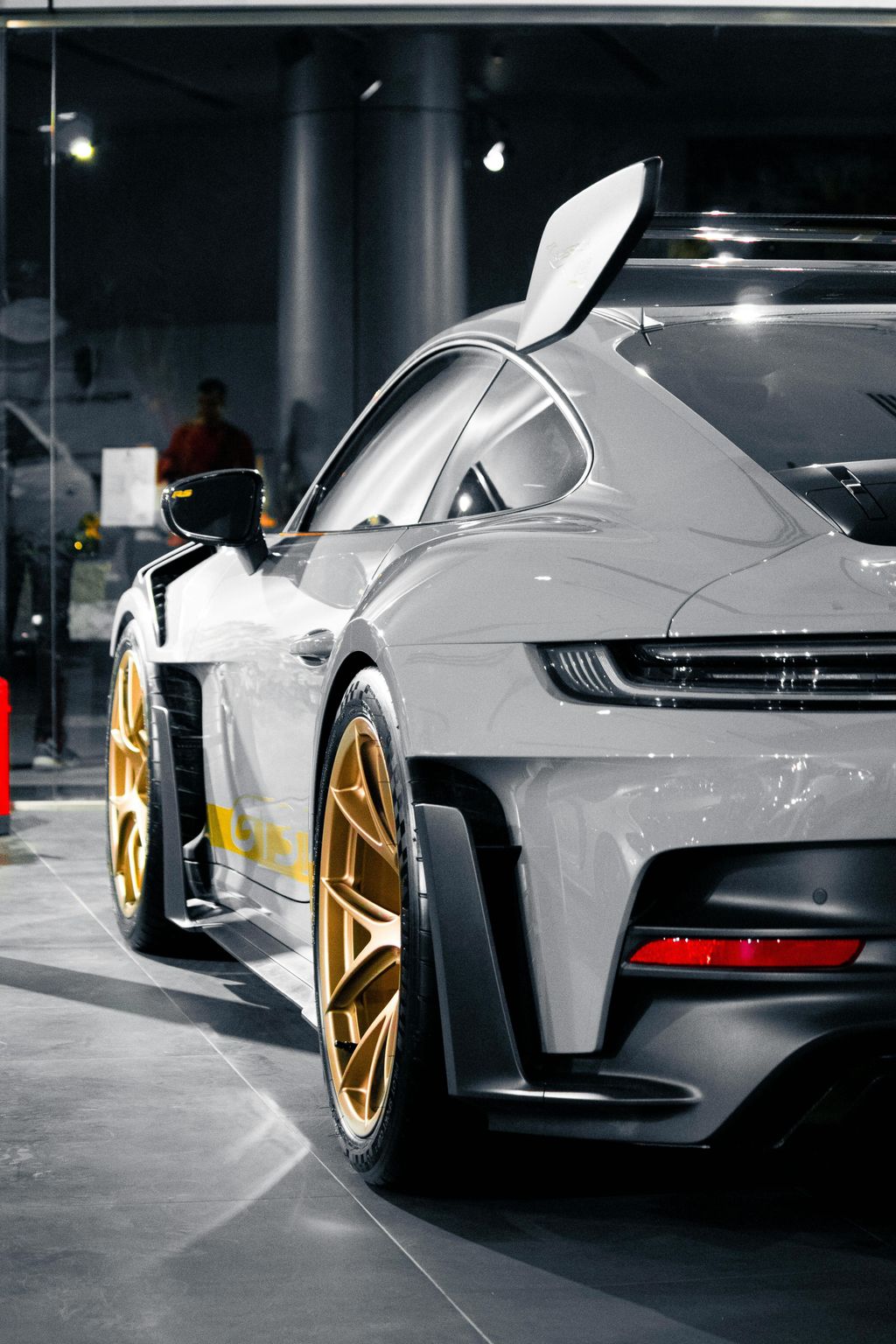
We’ve all witnessed the incredible rise of Japanese automotive engineering, but there’s something truly special about the classics that started it all. These old Japanese cars aren’t just vehicles; they’re rolling pieces of history that transformed the global automotive industry forever, earning their place as cherished collector’s items.
From the legendary Toyota Corolla AE86 to the iconic Nissan Skyline GT-R, these vintage Japanese machines combine reliability with soul in ways that modern cars simply can’t match. We’re talking about an era when manufacturers prioritized pure driving experience over flashy tech and when every model had distinct character that made enthusiasts fall in love, forging a deep connection that resonates with collectors today.
Whether you’re considering your first classic Japanese car purchase or you’re already deep into the JDM scene, we’ll explore everything you need to know about these automotive treasures. Let’s jump into what makes these cars so desirable and why their values continue climbing in today’s collector market, establishing new benchmarks for automotive appreciation.
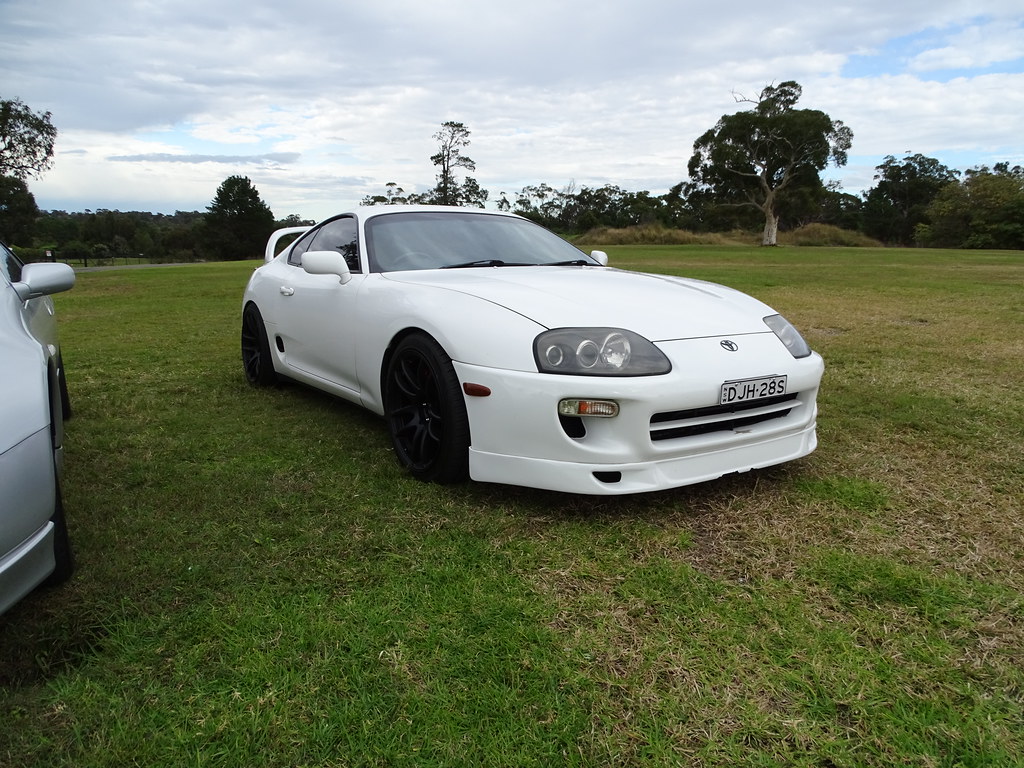
1. **Toyota Supra MK4 (1993-2002)**Toyota’s MK4 Supra stands as the pinnacle of Japanese grand touring excellence, solidifying its position as one of the most sought-after performance cars of its generation. We recognize this fourth-generation model as the most desirable Supra variant, largely thanks to its legendary 2JZ-GTE twin-turbo inline-six engine.
This robust powerplant produces a formidable 320 horsepower from the factory, but its true allure lies in its incredible tuning potential. Enthusiasts cherish its robust construction, with many examples pushing well beyond 1,000 horsepower with modifications, demonstrating the engine’s inherent strength and engineering brilliance.
The performance credentials are equally impressive, featuring a 0 to 60 mph time of 4.6 seconds and a top speed of 177 mph. The Supra’s sophisticated sequential twin-turbo system delivers linear power delivery while maintaining excellent drivability, a testament to Toyota’s meticulous engineering. Production numbers remained relatively low at approximately 11,200 units for the US market, significantly contributing to its current collector status and rapidly rising values.
Market values have skyrocketed dramatically over the past decade, reflecting the model’s iconic status and scarcity. Clean examples now command anywhere from $80,000 to $150,000, with pristine, low-mileage models reaching $200,000 or even more. We’ve observed auction prices climbing steadily as collectors recognize the MK4’s profound significance in automotive history and its lasting impact on performance car culture.
Car Model Information: 2023 Toyota Camry XLE
Name: Toyota Supra
Caption: Toyota GR Supra (J29/DB)
Manufacturer: Toyota
Aka: unbulleted list
Production: unbulleted list
Class: Sports car
BodyStyle: fastback,coupé
Layout: Front-engine, rear-wheel-drive layout
Predecessor: Toyota Celica (A20)
Categories: 1980s cars, 1990s cars, 2000s cars, 2010s cars, 2020s cars
Summary: The Toyota Supra (Japanese: トヨタ・スープラ, Hepburn: Toyota Sūpura) is a sports car and grand tourer manufactured and developed by the Toyota Motor Corporation beginning in 1978. The name “supra” is a definition from the Latin prefix, meaning “above”, “to surpass” or “go beyond”.
The initial four generations of the Supra were produced from 1978 to 2002. The fifth generation has been produced since March 2019 and later went on sale in May 2019. The styling of the original Supra was derived from the Toyota Celica, but it was longer. Starting in mid-1986, the A70 Supra became a separate model from the Celica. In turn, Toyota also stopped using the prefix Celica and named the car Supra. Owing to the similarity and past of the Celica’s name, it is frequently mistaken for the Supra, and vice versa. The first, second and third generations of the Supra were assembled at the Tahara plant in Tahara, Aichi, while the fourth generation was assembled at the Motomachi plant in Toyota City. The 5th generation of the Supra is assembled alongside the G29 BMW Z4 in Graz, Austria by Magna Steyr.
The Supra traces much of its roots back to the 2000GT owing to an inline-6 layout. The first three generations were offered with a direct descendant to the Crown’s and 2000GT’s M engine. Interior aspects were also similar, as was the chassis code “A”. Along with this name, Toyota also included its own logo for the Supra. It was derived from the original Celica logo, being blue instead of orange. This logo was used until January 1986, when the A70 Supra was introduced. The new logo was similar in size, with orange writing on a red background, but without the dragon design. That logo, in turn, was on Supras until 1991 when Toyota switched to its current oval company logo. The dragon logo was a Celica logo regardless of what colour it was. It appeared on the first two generations of the Supra because they were officially Toyota Celicas. The dragon logo was used for the Celica line until it was also discontinued.
In 1998, Toyota ceased sales of the fourth-generation Supra in the United States. Production of the fourth-generation Supra for worldwide markets ended in 2002. In January 2019, the fifth-generation Supra, which was co-developed with the G29 BMW Z4, was introduced.
Get more information about: Toyota Supra
Buying a high-performing used car >>>
Brand: Toyota Model: Supra MK4
Price: $23,895 Mileage: 44,570 mi.
Read more about: Beyond the Hype: Why Savvy Celebrity Collectors Are Investing Big in Vintage Japanese Sports Cars and What It Means for Your Portfolio
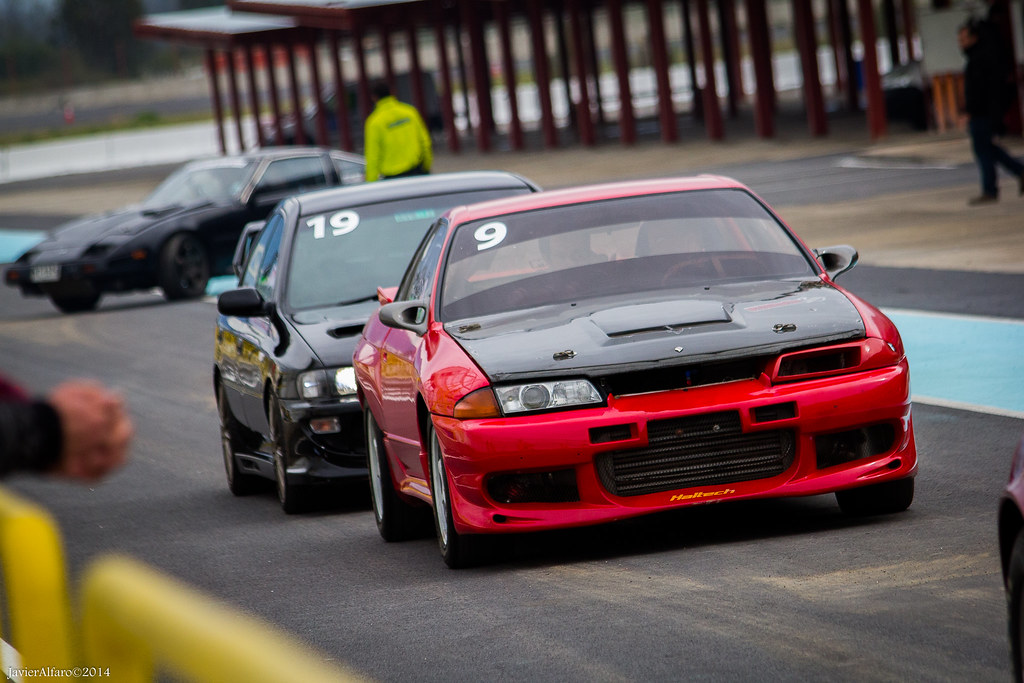
2. **Nissan Skyline GT-R R32 (1989-1994)**Nissan’s R32 GT-R earned the indelible nickname “Godzilla” through its absolute dominance in motorsports competition, becoming a legend in its own time. This all-wheel-drive monster revolutionized performance car engineering with its groundbreaking ATTESA E-TS system and sophisticated HICAS four-wheel steering technology.
Its racing victories are the stuff of legend, including an astonishing 29 consecutive wins in the Japanese Touring Car Championship. This unparalleled success cemented its legendary status among enthusiasts worldwide, demonstrating a level of engineering superiority that few rivals could match. The GT-R was not just a car; it was a force of nature.
The heart of Godzilla is the twin-turbo RB26DETT power plant, which delivers 276 horsepower in factory specification. This 2.6-liter inline-six engine features individual throttle bodies and advanced engine management systems that were groundbreaking for the era, offering precision and responsiveness. Acceleration figures show 0 to 60 mph in 5.6 seconds, with a top speed electronically limited to 112 mph, though its track prowess told a different story.
Recent importation eligibility has sparked tremendous collector interest, particularly in North American markets, opening a new chapter for this iconic model. We’ve seen pristine examples selling for $60,000 to $100,000, with rare variants like the V-Spec commanding premium prices due to their exclusivity and enhanced performance. Production totaled approximately 43,000 units across all variants, making clean examples increasingly difficult to source and highly prized by collectors.
Car Model Information: 2023 Toyota Camry XLE
Name: Nissan Skyline GT-R
Caption: 2002 Nissan Skyline GT-R V·spec II (BNR34)
Manufacturer: Nissan
Production: unbulleted list
Assembly: unbulleted list
Class: Sports car
Related: unbulleted list
Transmission: unbulleted list
Successor: Nissan GT-R
Categories: 1970s cars, 1980s cars, 1990s cars, 2000s cars, 24 Hours of Le Mans race cars
Summary: The Nissan Skyline GT-R (Japanese: 日産・スカイラインGT-R, Hepburn: Nissan Sukairain GT-R) is a Japanese sports car based on the Nissan Skyline range. The first cars named “Skyline GT-R” were produced between 1969 and 1972 under the model code KPGC10, and were successful in Japanese touring car racing events. This model was followed by a brief production run of second-generation cars, under model code KPGC110, in 1973.
After a 16-year hiatus, the GT-R name was revived in 1989 as the BNR32 (“R32”) Skyline GT-R. Group A specification versions of the R32 GT-R were used to win the Japanese Touring Car Championship for four years in a row. The R32 GT-R also had success in the Australian Touring Car Championship, with Jim Richards using it to win the championship in 1991 and Mark Skaife doing the same in 1992, until a regulation change excluded the GT-R in 1993. The technology and performance of the R32 GT-R prompted the Australian motoring publication Wheels to nickname the GT-R “Godzilla” in its July 1989 edition. Wheels then carried the name through all the generations of Skyline GT-Rs, most notably the R34 GT-R, which they nicknamed “Godzilla Returns”, and described as “The best handling car we have ever driven”. In tests conducted by automotive publications, the R34 GT-R covered a quarter of a mile (402 metres) in 12.2 seconds from a standing start time and accelerated from 0–100 km/h (0–62 mph) in 4.4 seconds.
The Skyline GT-R became the flagship of Nissan performance, showing many advanced technologies including the ATTESA E-TS all-wheel drive system and the Super-HICAS four-wheel steering. Today, the car is popular for import drag racing, circuit track, time attack and events hosted by tuning magazines. Production of the Skyline GT-R ended in August 2002. The car was replaced by the GT-R (R35), an all-new vehicle based on an enhanced version of the Skyline V36 platform. Although visibly different, the two vehicles share similar design features and are manufactured in the same factory.
The Skyline GT-R was never manufactured outside Japan, and the sole export markets were Hong Kong, Singapore, Australia and New Zealand, in 1991, and the UK (in 1997, due to the Single Vehicle Approval scheme). They are also popular across the world as used Japanese imports.
Despite this, the Skyline GT-R has become an iconic sports car as a grey import vehicle in the Western world (mainly the United Kingdom, Australia, New Zealand, South Africa, Ireland, Canada, and the United States). It has become notable through pop culture such as The Fast and the Furious, Initial D, Shakotan Boogie, Tokyo Xtreme Racer, Wangan Midnight, Need for Speed, Forza, Driving Emotion Type-S, Test Drive, and Gran Turismo.
In 2019, Nismo announced that it would resume production of spare parts for all generations of the Skyline GT-R, including body panels and engines.
Get more information about: Nissan Skyline GT-R
Buying a high-performing used car >>>
Brand: Nissan Model: Skyline GT-R R32
Price: $23,895 Mileage: 44,570 mi.
Read more about: Beyond the Hype: Why Savvy Celebrity Collectors Are Investing Big in Vintage Japanese Sports Cars and What It Means for Your Portfolio

3. **Honda NSX (1990-2005)**Honda’s NSX redefined supercar expectations through its revolutionary aluminum construction and surprising everyday usability, a combination that challenged the established order. We consider this mid-engine marvel the first Japanese supercar to compete directly with Ferrari and Porsche offerings, proving that exotic performance could also be reliable and refined.
Crucially, development input from Formula One legend Ayrton Senna helped create handling characteristics that remain impressively sharp by today’s standards. This collaboration ensured that the NSX offered a driving experience that was both exhilarating and incredibly precise, setting a new benchmark for driver involvement and chassis dynamics.
The natural aspiration of its VTEC V6 engine delivers between 270 and 290 horsepower, depending on the model year and market specification. This 3.0-liter engine provides linear power delivery and an intoxicating soundtrack that modern turbocharged engines rarely match, appealing directly to the purist. Performance figures include 0 to 60 mph times of 5.7 seconds and a top speed of 168 mph, highlighting its genuine supercar credentials.
Production numbers totaled just 18,685 units worldwide over 15 years of manufacture, a testament to its bespoke nature and meticulous build quality. This limited production run has naturally created strong collector demand, with values ranging from $90,000 for higher mileage examples to a staggering $180,000 for pristine, low-mile specimens. We’ve observed consistent appreciation in NSX values as collectors recognize its profound significance in automotive history and its role in reshaping the supercar landscape.
Read more about: Beyond the Hype: Why Savvy Celebrity Collectors Are Investing Big in Vintage Japanese Sports Cars and What It Means for Your Portfolio
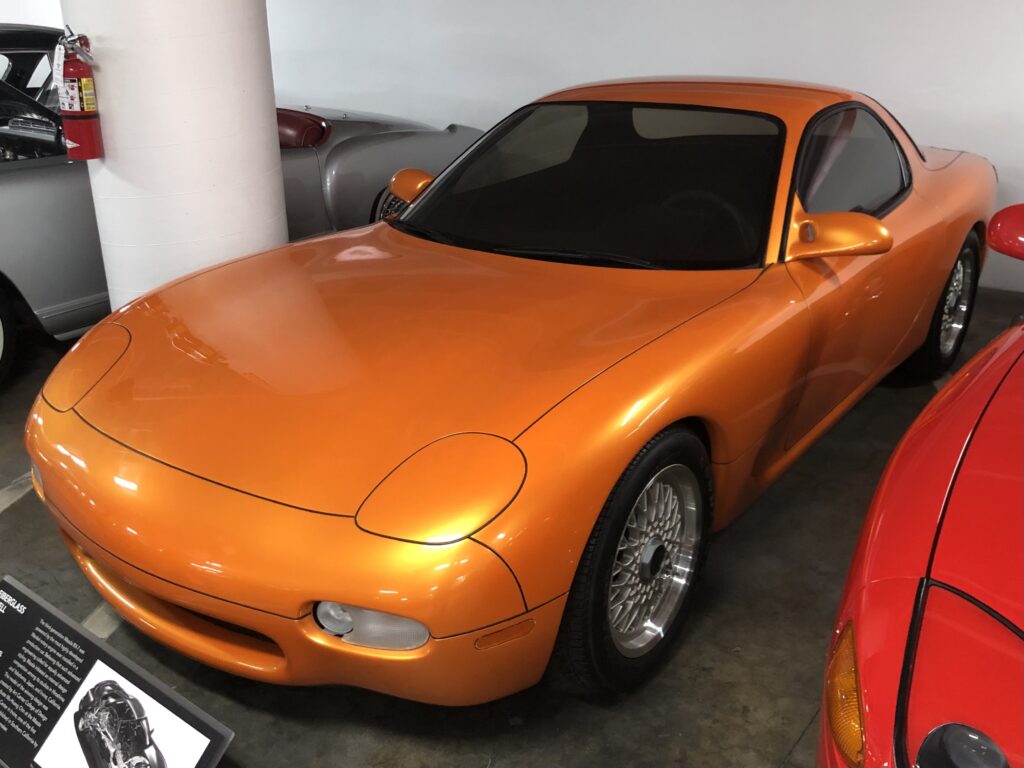
4. **Mazda RX-7 FD (1992-2002)**Mazda’s FD RX-7 represents the final evolution of rotary engine sports car perfection, showcasing the pinnacle of Wankel engine technology. This third-generation model featured its iconic twin-turbo 13B-REW powerplant, producing a potent 255 horsepower from its compact and unique design.
The car’s distinctive styling, with its charming popup headlights and flowing bodywork, remains timeless decades after production ended, captivating enthusiasts with its sleek and aerodynamic lines. The FD RX-7 was not just about power; it was about an entire driving philosophy centered around lightness and balance.
The sequential twin-turbo system provides smooth power delivery across the entire rev range, ensuring an engaging and responsive throttle. The compact rotary engine allowed for perfect 50/50 weight distribution and an exceptionally low center of gravity, which dramatically enhances its already phenomenal handling dynamics. Performance capabilities include 0 to 60 mph acceleration in 5.3 seconds and a top speed of 158 mph, making it a serious contender in its class.
Collector values have appreciated significantly over recent years as clean examples become increasingly rare and sought after. We’ve tracked market prices ranging from $35,000 for higher mileage examples to an impressive $80,000 for pristine, original condition cars. Total US production numbered approximately 13,800 units, contributing directly to its growing scarcity and collector desirability in today’s vibrant market.
Car Model Information: 1989 Mazda RX-7
Name: Mazda RX-7
Caption: 1994 Mazda RX-7 R2 (FD3S)
Manufacturer: Mazda
Aka: Mazda Savanna RX-7 (Japan, 1978–1991),Mazda ɛ̃fini RX-7 (Japan, 1991–1997)
Class: Sports car
Production: 1978–2002,811,634 produced
Assembly: Hiroshima
Platform: Mazda F platform
Layout: Front-engine, rear-wheel-drive layout#Front mid-engine, rear-wheel-drive layout
Predecessor: Mazda RX-3
Successor: Mazda RX-8
Categories: 1980s cars, 1990s cars, 2000s cars, 24 Hours of Le Mans race cars, All Wikipedia articles written in British English
Summary: The Mazda RX-7 is a sports car which was manufactured and marketed by Mazda from 1978 to 2002 across three generations. It has a front mid engine, rear-wheel-drive layout and uses a compact and lightweight Wankel rotary engine.
The first-generation RX-7, codenamed SA (early) and FB (late), is a two-seater coupé with a rear hatchback. It featured a 12A carbureted rotary engine as well as the option for a 13B rotary engine with electronic fuel injection in later years. The second-generation RX-7, carrying the internal model code FC, was offered as a two-seater coupé with a 2+2 option available in some markets, as well as in a convertible body style. This was powered by the 13B rotary engine, offered in naturally aspirated or turbocharged forms. The third-generation RX-7, model code FD, was offered as a two-seater coupé with a 2+2 version offered as an option for the Japanese market. It featured a sequentially turbocharged 13B REW engine.
More than 800,000 RX-7s were manufactured over its lifetime.
Get more information about: Mazda RX-7
Buying a high-performing used car >>>
Brand: Mazda Model: RX-7
Price: $14,998 Mileage: 88,741 mi.
Read more about: Beyond the Hype: Why Savvy Celebrity Collectors Are Investing Big in Vintage Japanese Sports Cars and What It Means for Your Portfolio
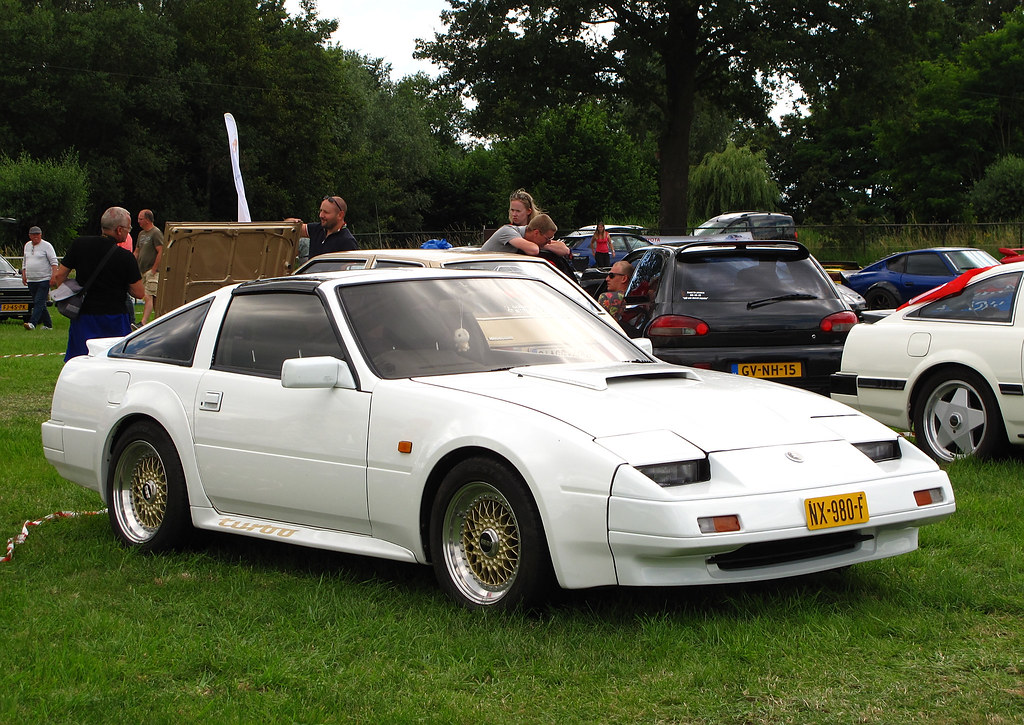
5. **Nissan Fairlady Z (240Z, 1969-1978)**Nissan’s Z-car series revolutionized the affordable sports car market, establishing a new paradigm from its debut in 1969 through 1978. The original 240Z, in particular, launched with a spirited 2.4-liter inline-six engine producing 151 horsepower, delivering impressive performance for its remarkably accessible $3,526 price tag.
Its combination of sleek styling, robust performance, and everyday reliability made it an instant hit with the public. Sales figures for the 240Z alone reached an astounding 165,000 units, firmly establishing it as one of the best-selling sports cars of its era and a true global phenomenon.
While performance specifications varied across the subsequent 260Z and 280Z generations, the 240Z laid the groundwork for the series’ reputation. Quarter-mile times consistently stayed under 8 seconds across all variants, unequivocally establishing the Z-car as a legitimate muscle car alternative, capable of holding its own against more expensive and traditionally powerful American iron.
Today, collector values strongly reflect the 240Z’s iconic status as a trailblazer in the Japanese performance scene. Clean examples now command between $25,000 and $45,000, with rare early production models, often prized for their originality and historical significance, reaching $60,000. These figures underscore the enduring appeal and investment potential of this pivotal model in automotive history.
Car Model Information: 2023 Toyota Camry XLE
Name: Nissan S130
Aka: Datsun 280ZX,Nissan Fairlady Z
Caption: 1982 Datsun 280ZX 2+2 (Europe)
Class: Sports car
Manufacturer: Nissan
BodyStyle: fastback
Production: June 1978–1983
Layout: Front-engine, rear-wheel-drive layout
Assembly: ubl
Engine: Nissan L engine#L20,Straight-six engine
Transmission: Borg-Warner,Borg-Warner T-5 transmission
Predecessor: Nissan Fairlady Z (S30)
Successor: Nissan 300ZX#Z31
Weight: cvt
Wheelbase: cvt
Length: cvt
Width: cvt
Height: cvt
Categories: 1980s cars, All articles needing additional references, All articles with unsourced statements, Articles needing additional references from May 2018, Articles with short description
Summary: The Nissan S130 is a sports coupé produced by Nissan in Japan from 1978 until 1983. It was sold as the Datsun 280ZX, Nissan Fairlady Z and Nissan Fairlady 280Z, depending on the market. In Japan, it was exclusive to Nissan Bluebird Store locations. It was the second generation Z-car, replacing the Nissan Fairlady Z (S30) in late 1978. The 280ZX was the first time the “by Nissan” subscript was badged alongside the Datsun logo, along with Nissan trucks. The 280ZX was Motor Trend’s import car of the year for 1979. The 280ZX was replaced by the Nissan 300ZX in 1984.
Get more information about: Nissan Fairlady Z (S130)
Buying a high-performing used car >>>
Brand: Nissan Model: Fairlady Z
Price: $23,895 Mileage: 44,570 mi.
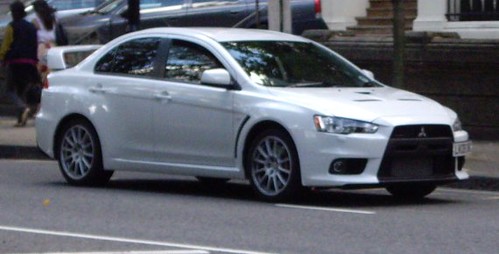
6. **Mitsubishi Lancer Evolution Series (1992-2016)**Mitsubishi’s Evolution series profoundly redefined performance sedans, transforming what was possible in a practical four-door package from 1992 to 2016. At its core was the formidable 4G63T turbocharged engine, which evolved from a potent 250 horsepower in the Evo I to an incredible 440 horsepower in its final special editions.
This immense power, channeled through advanced all-wheel-drive traction and sophisticated electronic systems, delivered supercar-level acceleration and grip. The Evolution proved that a sedan could offer not only practicality but also exhilarating, track-capable performance without compromise, earning a fierce loyalty among enthusiasts.
Track performance consistently validated the Evo’s muscle car credentials and engineering prowess. The Evo VIII MR achieved a blistering 7:38 Nürburgring lap time, while the later Evo X FQ-400 recorded an astonishing 0-60 mph sprint in just 3.8 seconds. Its rally success further cemented its legend, including four consecutive Industry Rally Championship driver titles with the iconic Tommi Mäkinen from 1996 to 1999.
Collector interest now spans the entire Evolution lineup, recognizing the unique contributions of each iteration to its legacy. Early Evo I-III models sell for $30,000 to $50,000, with rare Evo VI Tommi Mäkinen editions reaching an impressive $75,000 due to their historical significance and limited production. Later generations like the Evo VIII and IX command $25,000 to $45,000, while final edition Evo Xs approach $60,000, highlighting the sustained and growing demand for these rally-bred machines.
These classic Japanese sports and rally cars represent more than just transportation; they are monuments to engineering ingenuity and passionate performance. Their values continue to climb as a new generation of enthusiasts and seasoned collectors alike recognize their irreplaceable historical significance and the sheer joy they offer behind the wheel.
Car Model Information: 2023 Toyota Camry XLE
Name: Mitsubishi Lancer Evolution X (CZ4A)
Manufacturer: Mitsubishi Motors
Assembly: Kurashiki, Okayama
Production: October 2007 – May 2016
Platform: Mitsubishi GS platform
Class: Sport compact car,Sports sedan
Layout: Front-engine, all-wheel-drive layout
Related: Mitsubishi Lancer#2007
BodyStyle: Sedan (automobile)
Engine: 1998 cc
Abbr: on
Order: 4B11T,Inline-four engine
Powerout: convert
Transmission: Twin Clutch SST,dual-clutch transmission
Wheelbase: 2650 mm
Length: 4495 mm
Width: 1810 mm
Height: 1480 mm
Weight: convert
Predecessor: Mitsubishi Lancer Evolution IX
Designer: Omer Halilhodžić
Categories: 2010s cars, All-wheel-drive vehicles, Articles with short description, Cars introduced in 2007, Mitsubishi Motors vehicles
Summary: The Mitsubishi Lancer Evolution X is the tenth and final generation of the Lancer Evolution, a sports sedan produced by Japanese manufacturer Mitsubishi Motors, designed by Omer Halilhodžić.
By September 2005, Mitsubishi introduced a concept version of the next-gen Evolution at the 39th Tokyo Motor Show named the Concept-X, designed by Omer Halilhodžić at the company’s European design centre.
Mitsubishi unveiled a second concept car, the Prototype-X, at the 2007 North American International Auto Show (NAIAS).
The Lancer Evolution X sedan features a 4B11T 2.0L (1998cc) turbocharged, all-aluminium inline-4 GEMA engine. Power and torque depend on the market but all versions have at least 280 PS (206 kW; 276 hp). (JDM version), the American market version has slightly more. The UK models were reworked by Mitsubishi UK, in accordance with previous MR Evolutions bearing the FQ badge. Options for the UK Evolutions are 300 hp (220 kW) and 360 hp (270 kW).
Two versions of the car are offered in the U.S. The Lancer Evolution MR, with 6-speed Twin Clutch Sportronic Shift Transmission (TC-SST). The other version is the GSR which has a 5-speed manual transmission system. The car also has a new full-time four-wheel drive system named S-AWC (Super All Wheel Control), an advanced version of Mitsubishi’s AWC system used in previous generations. The S-AWC uses torque vectoring technology to send different amounts of torque to the rear wheels.
It also featured Mitsubishi’s new 6-speed SST dual-clutch automatic transmission with steering-mounted magnesium alloy shift paddles. It has replaced the Tiptronic automatic transmission, hence the SST version replaced the GT-A version (which was used in Evolution VII and Evolution IX Wagon). A 5-speed manual gearbox was also available. The Lancer Evolution also incorporated Mitsubishi’s next-generation RISE safety body.
The Evolution X went on sale October 2, 2007 in Japan, January 2008 in the US, February in Canada (as the first version of Evolution in Canada) and by March 2008 in the UK. The Twin Clutch SST version was available in Japan from November 2007. Europe followed with sales in May, GSR and MR version included premium package. The introduction of the 2010 MR-Touring moved the car even further upscale. Leather and a moonroof became standard while revising the rear spoiler to just a lip spoiler.
In 2014, it was revealed that Mitsubishi would discontinue production of the Mitsubishi Lancer Evolution after the 2015 model year.
Get more information about: Mitsubishi Lancer Evolution X
Buying a high-performing used car >>>
Brand: Mitsubishi Model: Lancer Evolution Series
Price: $23,895 Mileage: 44,570 mi.
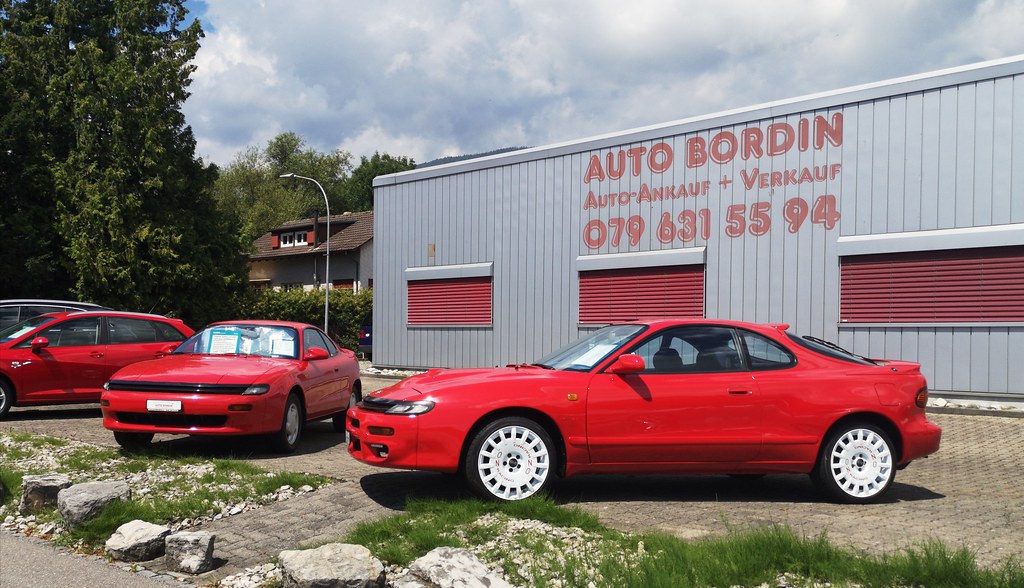
7. **Toyota Celica GT-Four**Toyota’s Celica GT-Four stands as a testament to the brand’s rally heritage, dominating motorsport from 1986 to 1999 across four formidable generations. At its heart was the turbocharged 3S-GTE engine, a powerplant evolving to produce between 185 and 255 horsepower, expertly channeled through Toyota’s advanced All-Trac all-wheel-drive system. This combination provided unparalleled grip and control, proving the Celica was far more than just a stylish coupe; it was a serious performance machine with undeniable engineering superiority.
The GT-Four distinguished itself from competitors through a host of engineering innovations, including active differentials, sophisticated anti-lag systems, and meticulously tuned suspension. These advancements delivered a rare blend of pure rally performance and impressive street usability. The ST205 generation, in particular, showcased this prowess with 245 horsepower and a 0-60 mph sprint in a blistering 5.4 seconds, solidifying its status as a genuine icon. Its rally victories were legendary, securing three consecutive Industry Rally Championship manufacturer titles from 1993 to 1995, cementing its reputation as an engineering marvel.
Market appreciation for these rally legends continues to grow, reflecting their scarcity and historical significance. ST165 models typically sell for $15,000 to $25,000, while the more coveted ST205 generation commands prices ranging from $25,000 to $40,000. For the truly dedicated, Japanese domestic market versions with full power specifications can reach an impressive $50,000 for exceptional examples, underscoring their enduring value as automotive treasures and sought-after collector’s items.
Car Model Information: 2023 Toyota Camry XLE
Name: Toyota Celica GT-Four
Caption: Toyota Celica GT-Four All-Trac Turbo (ST185, US)
Manufacturer: Toyota
Aka: ubl
Production: October 1986 – June 1999
ModelYears: 1986 – 1999
Assembly: Tahara, Aichi
Class: ubl
BodyStyle: liftback,coupé
Layout: Front-engine, four-wheel-drive layout
Related: Toyota Celica
Categories: 1980s cars, 1990s cars, All-wheel-drive vehicles, Articles with hAudio microformats, Articles with short description
Summary: The Toyota Celica GT-Four is a high performance model of the Celica Liftback that was produced from 1986 to 1999, with a turbocharged 3S-GTE engine, and full-time AWD. It was created to compete in the World Rally Championship, whose regulations dictate that a manufacturer must build road-going versions of the vehicle in sufficient numbers. These vehicles are referred to as “homologation special vehicles”.
The Celica GT-Four came in three generations; the ST165, based on the fourth generation Celica, and manufactured between October 1986 and August 1989; the “super round” shape ST185 produced from September 1989 to September 1993; and the ST205, built from February 1994 to June 1999.
The Celica GT-Four production cars were built at Toyota’s Tahara plant in Aichi Prefecture, Japan, and the rally cars were prepared by Toyota Team Europe in Cologne, Germany.
The Celica GT-Four ST165 made its World Rally Championship (WRC) debut in the 1988 Tour de Corse, with its first WRC victory coming in the 1989 Rally Australia. The ST185’s WRC debut was in the 1992 Rally Monte Carlo, and its first WRC win was in the 1992 Safari Rally, which was one of its four victories in that year. The ST185 was Toyota’s most successful rally car for more than two decades until this position was taken by Toyota Yaris WRC, and now the GR Yaris Rally1. The Celica ST185 won the WRC Drivers’ Championship in 1992, and the WRC Manufacturers’ and Drivers’ championships in 1993 and 1994. The ST205 came in late 1994, and became the official rally car in 1995 with one WRC victory before disqualification. It also won the 1996 European Rally Championship.
The significance of the Toyota Celica GT-Four in WRC history, previously dominated by European manufacturers, is that it was the first time a Japanese car manufacturer entered the WRC with an AWD turbocharged car, took trophies and won the titles. Since then other Japanese manufacturers have been successful in the WRC. Toyota preceded the Mitsubishi (Lancer Evolution and Galant VR-4) and the Subaru (Legacy and Impreza), but not the Mazda (Mazda 323GT-R & 323GT-X). Toyota later exited the WRC to concentrate their racing efforts in Formula One, but in 2017, 11 years after the Celica was discontinued, Toyota returned to WRC with the Toyota Yaris.
Toyota Team Europe (TTE) was also the first to introduce the anti-lag system (ALS) in their Group A ST205 Celica GT-Four rally cars, a technological breakthrough that was later adopted by other teams.
Get more information about: Toyota Celica GT-Four
Buying a high-performing used car >>>
Brand: Toyota Model: Celica GT-Four
Price: $23,895 Mileage: 44,570 mi.
Read more about: Beyond the Hype: 10 Undervalued 90s-Era Cars Still Smart Buys for Daily Commuters Next Year
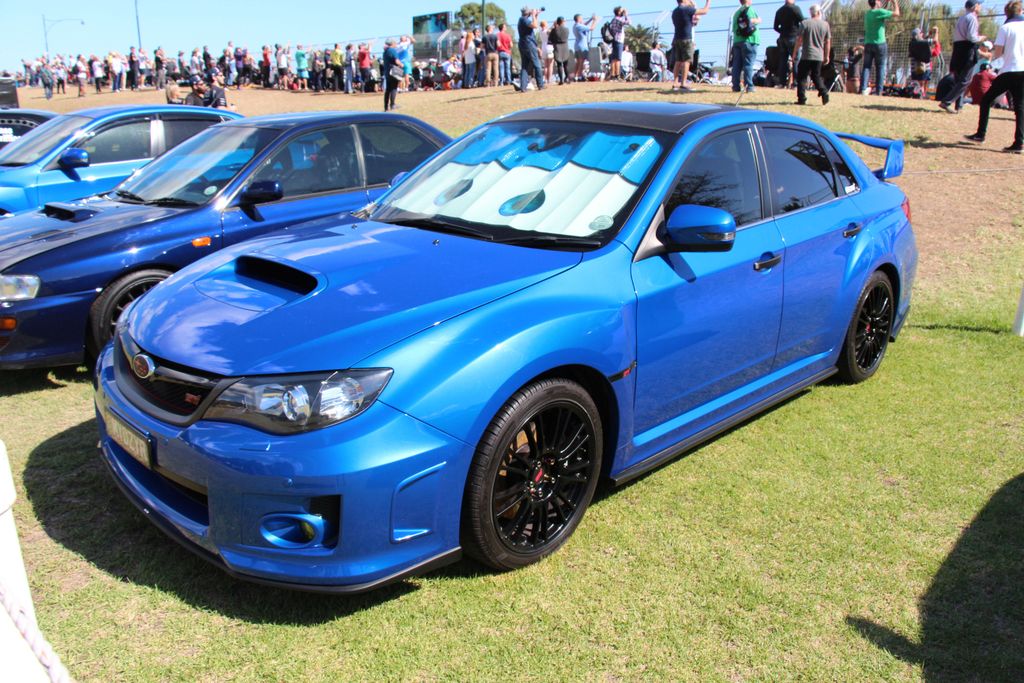
8. **Subaru Impreza WRX STI**Subaru’s Impreza WRX STI roared onto the scene in 1994, transforming the compact sedan segment and establishing a new benchmark for accessible performance. Powered by the iconic EJ20 and EJ25 turbocharged boxer engines, these machines produced between 265 and 305 horsepower, delivered through Subaru’s renowned symmetrical all-wheel-drive system. This offered legendary traction and handling, making the STI badge synonymous with uncompromising performance and genuine racing bloodlines.
The WRX STI’s performance capabilities weren’t just impressive for a sedan; they rivaled many purpose-built sports cars. The limited-production STI 22B, a homologation special, produced 276 horsepower and achieved a 0-60 mph sprint in just 4.9 seconds. Later generations consistently delivered sub-5-second acceleration times, complemented by serious hardware like Brembo brakes, adjustable differentials, and sport-tuned suspensions. Subaru’s deep-rooted rally heritage is intrinsically linked, securing three consecutive Industry Rally Championship manufacturer titles from 1995 to 1997.
Today, values for the WRX STI reflect its legendary status among enthusiasts and collectors alike. The highly sought-after STI 22B now sells for a staggering $100,000 to $200,000. Standard WRX STI models from 2004-2007 typically command $25,000 to $40,000, while pristine, low-mileage examples of the final-generation STIs can reach $45,000, indicating robust and sustained market demand for these rally-bred machines.
Car Model Information: 2023 Toyota Camry XLE
Name: Subaru Impreza WRX STI
Caption: 2011 Subaru Impreza WRX STI Sedan (3rd generation)
Manufacturer: Subaru
Production: 1994–2014
Assembly: Ōta, Gunma
Predecessor: Subaru Legacy (first generation)
Successor: Subaru WRX STI
Class: Sport compact,World Rally Car
BodyStyle: Compact Sedan, Coupe, Wagon, Hatchback
Layout: Front-engine design
Engine: Subaru EJ engine
Categories: All-wheel-drive vehicles, All articles needing additional references, All articles with unsourced statements, Articles needing additional references from July 2025, Articles with short description
Summary: The Subaru Impreza WRX STI is a high performance model of the Subaru Impreza compact car line, manufactured by Japanese automaker Fuji Heavy Industries Subaru.
In 1988, FHI created Subaru Tecnica International (STi) as its motorsport division to develop and compete in the FIA World Rally Championship and other motorsports activities. Following the introduction of the first generation Impreza in November 1992 and the following year’s debut of the Group A rally car into the WRC, an ‘STi version’ was made commercially available in January 1994 as a homologation model under FIA regulations. Thereafter, subsequent evolutions dubbed STi Version or simply STI were manufactured and sold alongside the Impreza model lineup initially in Japan only and later in selected world markets. As the STi or STI model was typically the highest spec of the Impreza, it has become popular with performance enthusiasts, tuners and amateur racers in many motorsports disciplines especially rallying and circuit driving.
FHI has released many different models and versions including special limited editions of the WRX STI. However many of these versions were and are only available in the Japanese Domestic Market. Although the concept behind the STI model is taking a base model such as the Impreza or Legacy and further developing it for high performance, STI models fall mainly into 2 categories. The first is a fully developed and tested model with the purpose of homologating it for motorsports which is sold as a street legal road car. The second is a complete car pre-fitted from the factory with parts that are available from the STI catalogue and marketed as a ‘Tuned by STI’ model. Spin-off models with mainly cosmetic additions or alterations are also marketed usually in limited quantities.
Get more information about: Subaru Impreza WRX STI
Buying a high-performing used car >>>
Brand: Subaru Model: Impreza WRX STI
Price: $23,895 Mileage: 44,570 mi.
Read more about: The 10 Legendary WRC Rally Homologations Every Motorsport Collector Needs to Discover Today
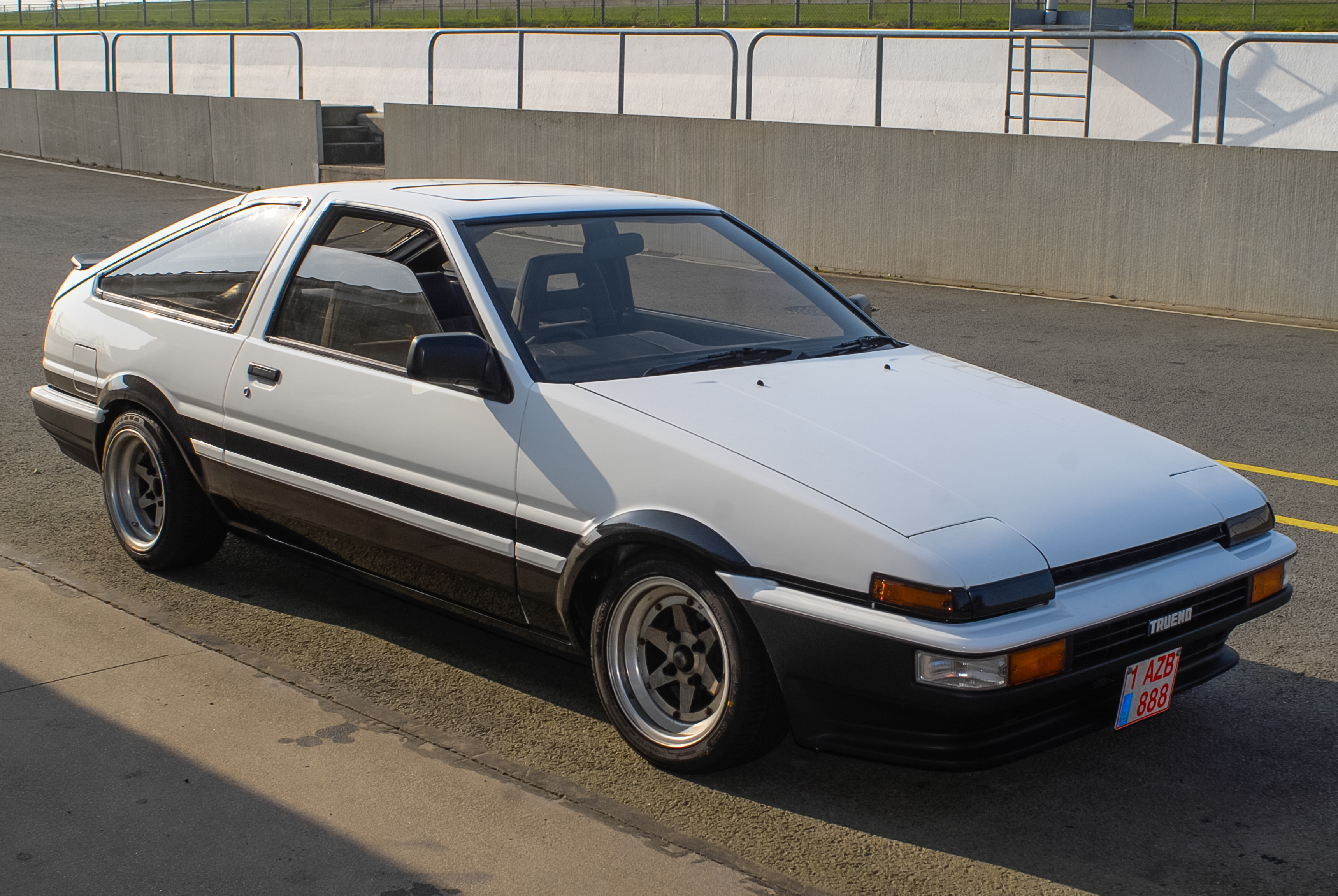
9. **Toyota Corolla AE86**Toyota’s rear-wheel-drive Corolla AE86 holds a unique position, embodying the perfect blend of economy car practicality and sports car dynamics during its 1983 to 1987 production run. This lightweight coupe, known as the “Hachi-Roku”, featured a naturally aspirated 4A-GE twin-cam engine producing 112 horsepower. Harnessed within a chassis weighing just 2,400 pounds, it created a remarkably agile and engaging driving experience, a true testament to Toyota’s nuanced engineering.
Driving enthusiasts quickly embraced the AE86’s exceptional handling characteristics, a direct result of its near-perfect 50/50 weight distribution and well-tuned MacPherson strut suspension. The car’s predictable oversteer tendencies made it an ideal platform for learning advanced driving techniques, swiftly becoming synonymous with nascent drifting culture. Professional racing further validated its capabilities, achieving notable success in IMSA GT racing and touring car championships throughout the 1980s, solidifying its reputation as a serious performance machine.
Current market prices unequivocally reflect the AE86’s cult status and enduring legacy. Clean examples now routinely sell between $20,000 and $45,000, with final values dependent on condition and originality. Pristine, unmodified models command premium prices, as collectors increasingly recognize their profound historical significance in Japanese automotive culture, particularly its foundational role in popularizing drifting worldwide and shaping a generation of car enthusiasts.
Car Model Information: 2023 Toyota Camry XLE
Name: Toyota Sprinter Trueno
Caption: Toyota Sprinter Trueno liftback (AE86)
Manufacturer: Toyota
Aka: Toyota Corolla Levin
Production: March 1972 – August 2000
Predecessor: Toyota Sprinter (E10)
Successor: Toyota Celica (T230)
Class: unbulleted list
BodyStyle: unbulleted list
Layout: unbulleted list
Categories: All Wikipedia articles written in British English, All articles needing additional references, Articles containing Japanese-language text, Articles containing simplified Chinese-language text, Articles needing additional references from January 2021
Summary: The Toyota Sprinter Trueno (トヨタ・スプリンタートレノ, Toyota Supurintā Toreno) is a series of compact sports coupés and liftbacks which were produced by Toyota from 1972 to 2000. The name trueno in Spanish means thunder. In Japan, the Sprinter Trueno was exclusive to Toyota Auto Store locations.
Its twin, the Toyota Corolla Levin (トヨタ・カローラレビン, Toyota Karōra Rebin), was produced in parallel with the Sprinter Trueno. In Middle English, levin means lightning. In Japan, the Corolla Levin was exclusive to Toyota Corolla Store locations.
Get more information about: Toyota Sprinter Trueno
Buying a high-performing used car >>>
Brand: Toyota Model: Corolla AE86
Price: $23,895 Mileage: 44,570 mi.
Read more about: From Wreckage to Riches: Unpacking the 2025 Car Flipping Landscape for Savvy Buyers
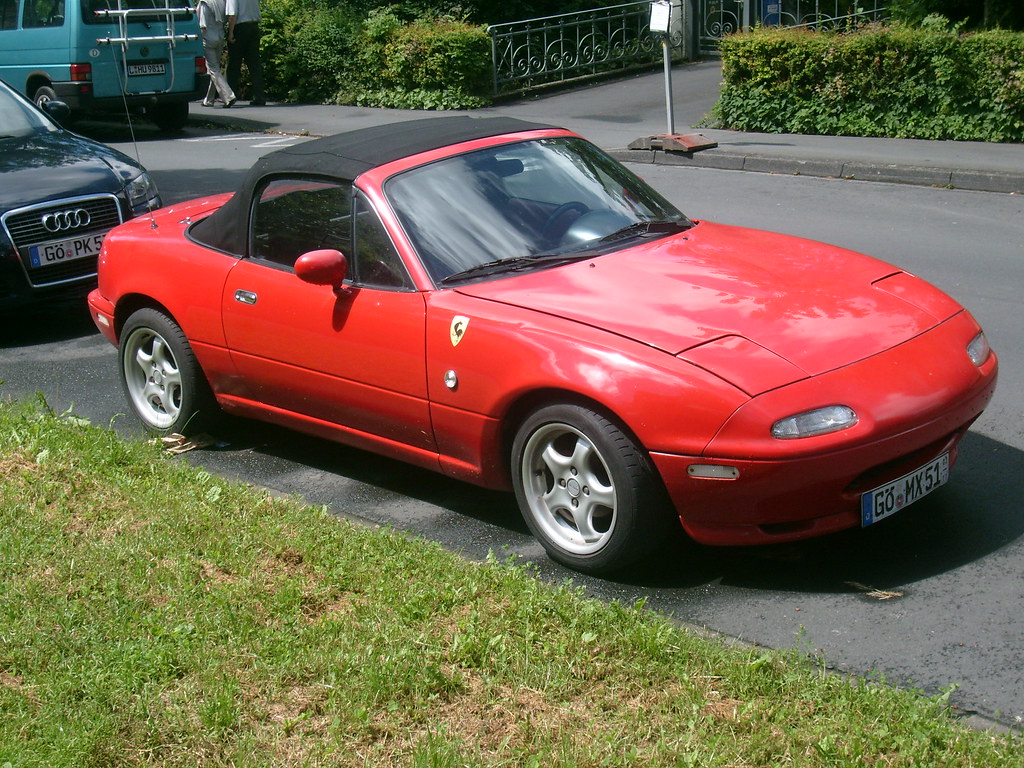
10. **Mazda Miata NA (First Generation)**Mazda’s original Miata, designated NA, redefined the affordable roadster market with its 1989 launch, masterfully blending classic British sports car proportions with renowned Japanese reliability and modern safety standards. The lightweight design philosophy was paramount, resulting in a mere 2,100-pound convertible that deliberately prioritized handling balance and driver engagement over brute-force power. Performance came from a naturally aspirated 1.6-liter engine producing 116 horsepower, perfectly matched to the car’s nimble chassis dynamics and precise five-speed manual transmission.
This exceptional power-to-weight ratio delivered a captivating acceleration experience while simultaneously maintaining excellent fuel economy, making it an ideal choice for both spirited weekend drives and practical daily commuting. Critical acclaim for the Miata was immediate and overwhelmingly positive. Automotive journalists universally praised its pure, unadulterated driving experience and its steadfast adherence to traditional sports car values during an era dominated by complex supercars, proving simplicity could still win hearts.
Today’s market values for the first-generation Miata range from a budget-friendly $8,000 for higher mileage examples to a robust $20,000 for pristine, low-mileage cars. Special editions, such as the track-focused R Package, consistently command premium prices, reflecting their enhanced performance and rarity. Collectors are increasingly appreciating these analog driving machines for their growing historical significance in automotive design and their ability to deliver pure driving joy often missing in contemporary vehicles.
Car Model Information: 2023 Mazda MX-5 Miata Club
Name: Mazda MX-5
Manufacturer: Mazda
Aka: unbulleted indent list
Production: 1989–present
Assembly: Hiroshima
Class: Roadster (car),sports car
Layout: unbulleted indent list
Platform: List of Mazda model codes#Model codes
Categories: 1990s cars, 2000s cars, 2010s cars, 2020s cars, All Wikipedia articles in need of updating
Summary: The Mazda MX-5 is a lightweight two-seat sports car manufactured and marketed by Mazda. In Japan, it is marketed as the Mazda Roadster or, previously, as the Eunos Roadster. In the United States it is sold as the Mazda Miata (), and it was formerly marketed under the same name in Canada. The name miata derives from Old High German for “reward”.
Produced at Mazda’s Hiroshima plant, the MX-5 debuted in 1989 at the Chicago Auto Show. It was created under the design credo Jinba ittai, meaning “unity of horse and rider”. Noted for its small, light, balanced and minimalist design, the MX-5 has often been described as a successor to the 1950s and 1960s Italian and British roadsters, with the Lotus Elan serving as a design benchmark.
Each generation is identified by a two-letter code, beginning with the first generation NA. The second generation NB launched in 1998, followed by the third generation NC in 2005, and the fourth generation ND in 2015.
More than one million MX-5s have been sold, making it the best-selling two-seat convertible sports car in history.
Get more information about: Mazda MX-5
Buying a high-performing used car >>>
Brand: Mazda Model: Miata
Price: $25,996 Mileage: 32,837 mi.
Read more about: Unleash Your Inner Mechanic: The Best DIY-Friendly Cars That Love to Be Tinkered With

11. **Lexus LS400 (First Generation)**The Lexus LS400, introduced in 1989, did more than just launch a new luxury brand; it redefined luxury car expectations, positioning itself as Toyota’s flagship sedan and a direct challenger to established European rivals. Engineers poured six years and an astounding $1 billion into its development, conducting over 2.7 million test miles. This meticulous process resulted in a vehicle delivering the refinement and prestige of German luxury, but with unparalleled Japanese reliability standards, shaking up the entire automotive world.
Performance specifications showcased impressive engineering prowess, driven by a butter-smooth 4.0-liter V8 engine producing 250 horsepower and 260 lb-ft of torque. Acceleration from 0-60 mph was achieved in a respectable 8.5 seconds, while its electronically limited top speed reached 155 mph. Crucially, the LS400 achieved these numbers while maintaining an exceptional level of quietness, registering a mere 58 decibels at 60 mph—a testament to its superior sound insulation and overall refinement that instantly impressed critics.
Market reception was immediate and overwhelmingly positive. The LS400 boldly undercut the Mercedes 420SE by $15,000, while simultaneously offering demonstrably superior reliability ratings. First-year sales in the United States alone reached an astounding 63,534 units, a feat that firmly established Lexus as a legitimate, formidable luxury brand virtually overnight. Today’s collector market reflects the LS400’s enduring legacy and groundbreaking impact, with pristine examples commanding premium prices as a pivotal piece of automotive history.
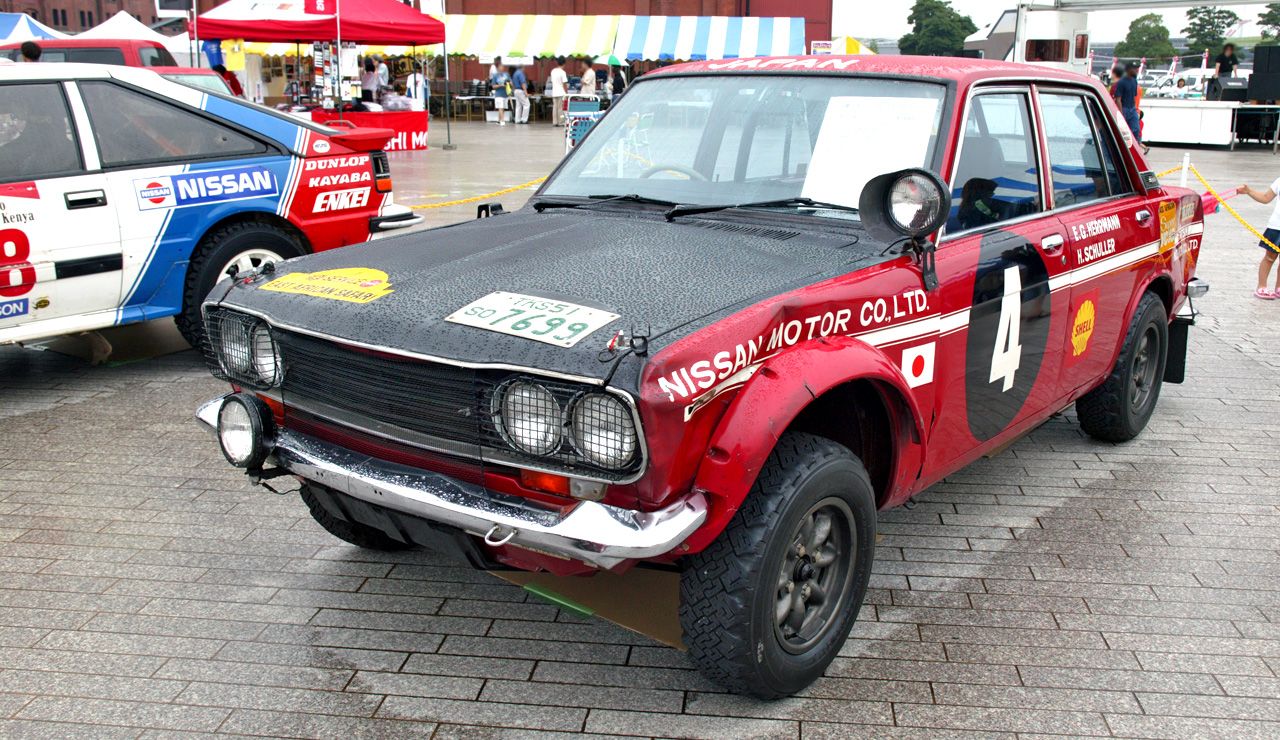
12. **Datsun 510**The Datsun 510, produced from 1968 to 1973, represents the perfect balance of affordability and immense restoration potential, making it a beloved classic for Japanese car enthusiasts. These iconic sedans and wagons consistently sell between $3,000 and $15,000 depending on their condition, making them an accessible entry point for first-time restorers or seasoned builders seeking a rewarding project. With over 1.6 million units manufactured worldwide, parts availability remains surprisingly strong, easing the restoration journey.
Performance enthusiasts were particularly drawn to the 510’s sophisticated rear-wheel-drive layout and independent rear suspension, a combination that made it highly competitive in both SCCA racing and rallying during its heyday. This inherent sporting DNA makes it a fantastic platform for performance upgrades. While restoration projects often focus on addressing common rust issues, the robust L-series engines typically require only basic maintenance, offering a solid foundation for enthusiasts looking to build a highly capable street machine.
The Datsun 510’s enduring appeal lies in its simplicity, robust engineering, and undeniable motorsport pedigree. Its accessible price point, combined with a passionate aftermarket and a supportive community, ensures that this “poor man’s BMW” will continue to be a cherished project car. It offers a tangible connection to a pivotal era in Japanese automotive history, promising a rewarding restoration experience and a classic ride that delivers pure driving enjoyment for generations of enthusiasts.
**Conclusion**
Read more about: Unleash Your Inner Gearhead: 14 Classic Car Restoration Projects Under $10K That Promise High Returns
As we’ve journeyed through these iconic Japanese automotive treasures, it becomes unequivocally clear why they are rapidly transitioning from mere vehicles to highly coveted collector’s items. Each car tells a story of innovation, passion, and engineering excellence, whether it’s the rally-bred prowess of the Celica GT-Four and WRX STI, the nimble dynamics of the Corolla AE86 and Miata, the groundbreaking luxury of the Lexus LS400, or the versatile charm of the Datsun 510. These machines stir emotions, connect generations, and represent an era where distinct character and pure driving joy were paramount. Their legend, much like their value, is only continuing to climb, inviting new enthusiasts to discover the magic behind the wheel and cherish these irreplaceable pieces of automotive heritage.

